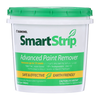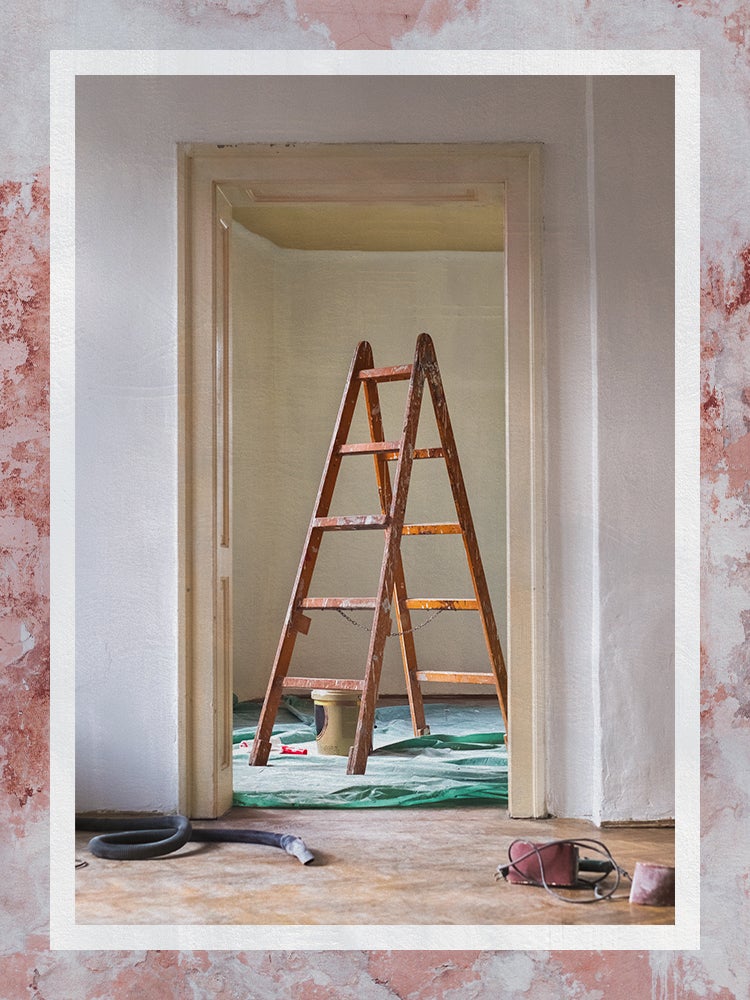According to This Professional Contractor, the Best Paint Stripper Is Only $18
Skip the extra tools; all you need is a little patience.
Published Dec 30, 2021 1:30 AM
We may earn revenue from the products available on this page and participate in affiliate programs.
Sometimes sandpaper and elbow grease just aren’t enough to rid an old door or piece of wood furniture of peeling paint. And when it comes to prepping any surface for a fresh coat (even a concrete patio), it’s important to remove its previous job first. So take a tip from the professionals and enlist the help of a paint stripper.
But which to choose? Removing paint can feel more like a science experiment rather than a fun DIY project. Zach Kenney, master certified painter and owner of ZK Painting, says that if you’ve ever slapped on layer after layer of paint stripper to no avail, you’ve likely just gone about the job all wrong or chosen a difficult product to work with. According to him, you don’t need to tack on a tin of mineral spirits or turpentine when checking out at your local hardware store—not even a pair of gloves. The best paint stripper, Kenney says, is Dumond’s Smart Strip.
Our Favorite
Best Overall: Dumond Smart Strip Paint Remover

VOC-free: Yes | Volume: 1 quart or 1 gallon | Good for: All surfaces
What We Like
- Odor-free
- Effective on a variety of surfaces, not just wood
- Safe on skin
Worth Noting
- Messy
- Can take close to a day to properly remove paint
Why we chose it: A nontoxic, no-fuss formula beloved by painting professionals that can be applied to everything, from metal to masonry.
Smart Strip is a water-based, 100 percent biodegradable product that’s easy enough for the amateur to use, and a product with which the DIY devotee is likely to become obsessed. It’s odor-free, so you can take on any project inside without having to worry about opening every window or keeping a fan going. It promises to remove up to 15 layers of paint at a time, but note that you may need to apply it more than once depending on how much paint you’re trying to remove. Yes, it’s a process, but a small price to pay for way less headaches (and risk).
“You can put your hands in it,” says Kenney. Is there a better recommendation when it comes to safety? “You don’t have to worry about kids or pets getting hurt, and it doesn’t require any special tools,” he notes. The other benefit? It doesn’t have to be neutralized. “A lot of the stronger strippers are very basic, so they need to be neutralized with an acid to drop the pH after,” he adds.
Runners-Up
- Heard of Citristrip before? If you’re a regular DIYer, you’ve likely spotted this acid’s iconic bright orange label on the shelves of most home improvement retailers. It isn’t a bad product, per se, it just requires a bit more finesse.
- Peel Away, also made by Dumond, is a pricier, two-step removal system. After brushing the product onto your surface, you stick on a top layer of paper and allow it to dry before peeling it, along with the paint it adhered to, away. Peel Away may be great at containing messes, but it has the words heavy duty on the label for a reason: It contains caustic elements that can burn your skin. “It’s highly basic,” Kenney points out, meaning it has to be neutralized, which typically adds another item like turpentine to your receipt.
- Max Strip is another big name in the paint-stripping space, but its gel-like, runny consistency can be tricky to work with, especially on vertical surfaces.
How We Chose These Products
When it comes to any sort of paint project, sometimes it’s best to get a professional opinion, and ZK Painting’s Kenney has been working with paint for 22 years—the amount of paint layers he’s removed? Countless. So take it from him when he says the only paint remover DIYers truly need is Dumond’s Smart Strip.
Our Shopping Checklist
Types
Paint strippers can be categorized into three main types: solvent, caustic, and biochemical. Solvent paint strippers are the strongest, often including methylene chloride; if a product features this ingredient, it’s reserved for professional use only (and you don’t need it for at-home DIYs, says Kenney). Of course, this is what makes these products so effective—they dissolve paint in a short amount of time, but can be potentially dangerous to inhale or if they come into contact with the skin. Caustic formulas don’t include this particular component, but typically feature the addition of lye (a strong alkaline also found in drain cleaners). They can still cause skin irritations but don’t pose as great a health risk as solvent strippers. Biochemical options are the safest of the bunch. They’re plant-based (think: pine, citrus, corn sugar, soy oil, etc.), making them less toxic. That’s not to say they won’t bother your hands at all, so check the packaging to confirm if gloves are needed.
Surfaces
Some paint strippers are specifically formulated for certain surfaces, especially tricky concrete, so be sure to check the directions. Or just go with a universal product like Smart Strip. Kenney confirms it can effectively be applied to a variety of surfaces: wood, brick, metal, stone, plaster, fiberglass, porcelain, and more.
Tools
The amount of tools needed will depend on the product you decide to go with—for Smart Strip, Kenney notes you’ll just need something to remove the product. He opts for a good plastic putty knife and perhaps a nylon bristle brush (for the details, like intricate millwork). He generally steers homeowners away from using metal scrapers, which can do a lot more harm than good. “Let the stripper do most of the work for you,” he says. “You’re not looking to get 100 percent of the paint off with the stripper, you’re looking for 95 percent. The rest you’ll do with sandpaper.”
Ask Domino
Q: What is the best way to apply a paint stripper?
According to Kenney, if your paint stripper isn’t working, you’re probably doing it wrong. Here’s the process he recommends: Before even unbottling your product, step number one is cleaning your surface. “Dirt is just going to slow the process,” warns Kenney. So make sure you wipe everything down before picking up a brush or putty knife.
Kenney strongly suggests testing out any product ahead of full application; Smart Strip can be applied to everything, but an inconspicuous spot on your surface is the place to start. Then tackle the job like you might frost a cake—thick layers are key, stresses Kenney. “It’s much easier to remove a thick, gelatinous paste than it is a liquid,” he says.
The next step is crucial. To prevent the paint stripper from drying out (if this happens, you’ll have to start the process all over again), cover everything in plastic wrap to lock the moisture in. “You want it to be airtight,” says Kenney. “The biggest thing is keeping it as wet as possible.” It’s best to not let natural elements interfere, so pick a day that isn’t blisteringly windy or hot if you’re applying outside. And in order to take full advantage of a paint stripper, you need patience. Because most products on the market today don’t include scarily strong chemicals, loosening up layers takes time. “Generally I would let it sit overnight—12 to 24 hours,” he says. Let it go any longer, though, and you run the risk of it being too dry to work with. When applied properly, you’ll need nothing more than that putty knife to scrape those layers away.
Q: Are mineral spirits and paint strippers the same thing?
Nope. “Mineral spirits is what we would use to clean up oil-based paint or thin an oil-based paint,” explains Kenney, who adds it functions as a solvent. Although mineral spirits to the average person are often used interchangeably with paint strippers, it’s actually just a paint thinner. You’ll likely only need to reach for this product if you’re wiping up spills or working with an extra-thick formula you’d like to cut back.
Q: How do I dispose of old paint stripper?
Water- and citrus-based strippers can be disposed of through the garbage. Try and soak up as much of the scraps as possible with old newspaper, notes Kenney, and place in a separate trash bag. For more intense, solvent-based strippers, the by-product is actually considered hazardous waste and cannot simply be taken to the curb. Instead, Kenney warns it’s likely you’ll need to tap a professional service to pick it up.
The Last Word
If you want to avoid having to purchase all the extras—whether it’s a metal scraper or some sort of neutralizer—then you can’t go wrong with Kenney’s pick. Dumond Smart Strip is the best paint remover for most at-home, DIY projects.
